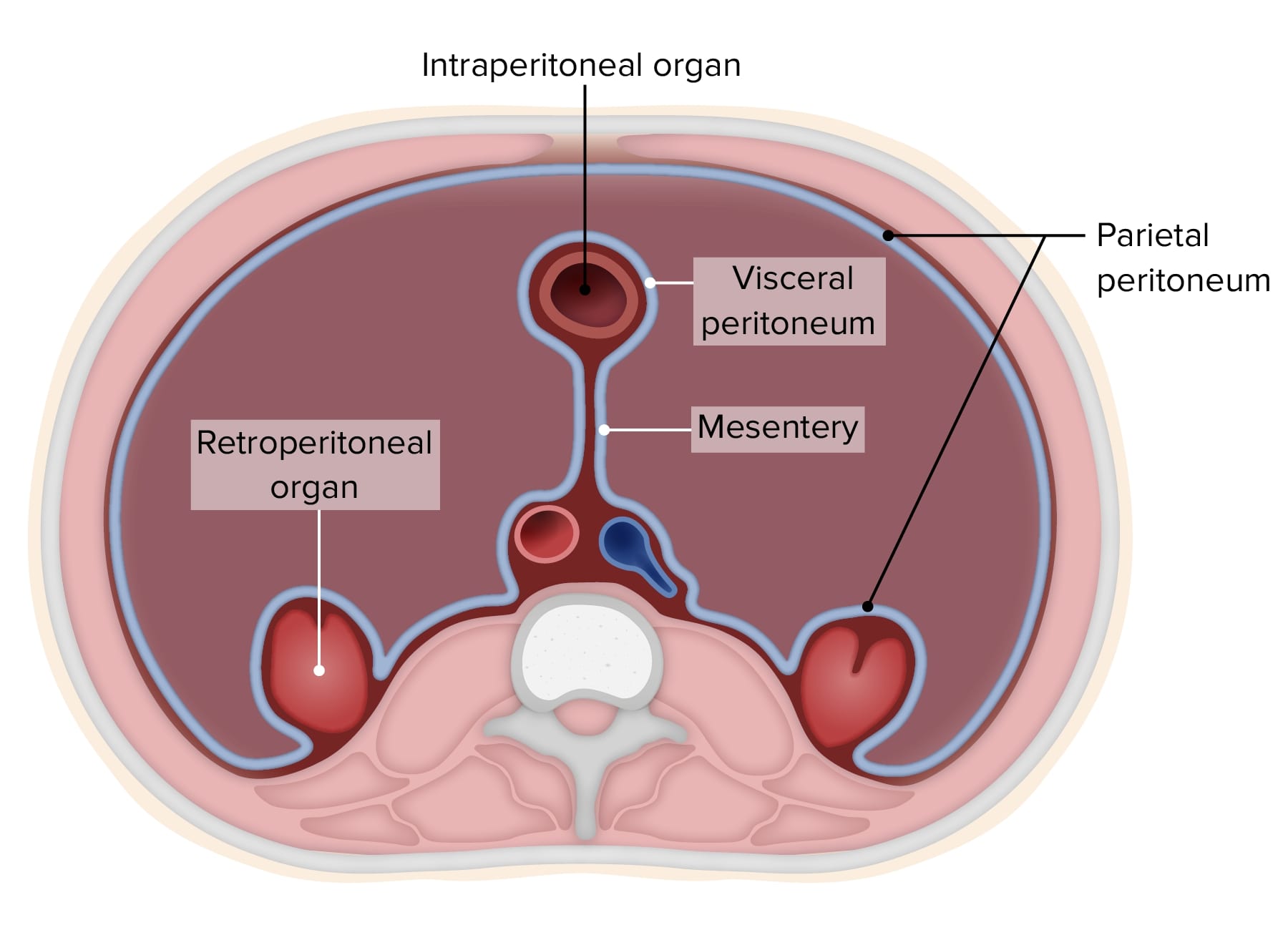Playlist
Show Playlist
Hide Playlist
Lesser Sac and Lesser Omentum
-
Slides Lesser Sac and Lesser Omentum.pdf
-
Download Lecture Overview
00:01 So now let's have a look at the lesser sac which in some textbooks maybe called the omental bursa and the boundaries of it. So we are now standing in that space. Anterior to this, we'll have the lesser omentum and the stomach. Posteriorly, we'll have the abdominal aorta and the pancreas. We'll also have part of the transverse mesocolon. And here is the epiploic foramen. To the right hand side of the omental bursa, the lesser sac, we'll have the epiploic foramen. We'll also have the caudate lobe of the liver. 00:35 Here now if welook at an anterior view, but again extending to the right hand side of the lesser omentum, we can now see the omental foramen. And that's really important. We'll come to it later because you can see some important vessels there. To the left hand side of this space, we've got the, let's go back, we've got the spleen. So that's occupying the most left aspect of the omental bursa and we can see the space here that is occupied really by that lesser omentum. We can see creeping up behind the liver as the superior recess and obviously we'll have the inferior recess and that can to a certain extent especially when during development actually pass down between layers of peritoneum forming the greater omentum. But as we develop, that actually becomes sealed off. 01:24 Here we've got the splenic recess as the space is passing towards the spleen. Let's then have a look at the lesser omentum. We've talked about it briefly, but let's have a spend a little bit more time looking at the lesser omentum. Here it is passing between the stomach and the liver, liver and the stomach. Hepatogastric. So the ligament double layer with peritoneum, parts of the lesser omentum passing between those 2 aspects. We also have the hepatoduodenal ligament. This is passing between the liver and the duodenum. So the hepatoduodenal ligament. The hepatoduodenal ligament is important because it contains 3 important vessels. The bile duct taking bile from the liver thru the pancreas and then into the duodenum. We saw that earlier and we'll look at it again when we look at the pancreas. The portal vein, which is taking all venous blood from the gastrointestinal tract thru the liver, so it's containing blood which is poorly oxygenated but nutrient rich because it's coming from all of the gastrointestinal tract which has absorbed all the nutrients from our food. That's the second structure. 02:34 And then the hepatic artery. A classic artery coming off the celiac trunk providing highly oxygenated blood to the liver to support its function. These 3 structures are known as the portal triad and they run through the free edge of the hepatoduodenal ligament. 02:52 That free edge is the edge which is forming the epiploic foramen or the anterior boundary of the epiploic foramen which you can see there in green. So if we were to have a closer look at the epiploic foramen, we can actually identify if our finger was pushed inside it then superiorly would hit the liver, inferiorly would hit the first part of the duodenum, anteriorly would have the hepatoduodenal ligament and the 3 vessels within it and posteriorly we have the inferior vena cava.
About the Lecture
The lecture Lesser Sac and Lesser Omentum by James Pickering, PhD is from the course Peritoneum and Peritoneal Cavity.
Included Quiz Questions
Which organ forms the lateral boundary of the lesser sac?
- Spleen
- Stomach
- Liver
- Pancreas
- Left kidney
Which structure is in the anterior boundary of the epiploic foramen?
- Portal vein
- Inferior vena cava
- Peritoneum covering the caudate lobe of the liver
- Peritoneum covering the hepatic artery
- Aorta
Which ligament within the greater omentum runs between the stomach and the transverse colon?
- Gastrocolic
- Gastrosplenic
- Gastrophrenic
- Gastroduodenal
Customer reviews
5,0 of 5 stars
| 5 Stars |
|
5 |
| 4 Stars |
|
0 |
| 3 Stars |
|
0 |
| 2 Stars |
|
0 |
| 1 Star |
|
0 |




